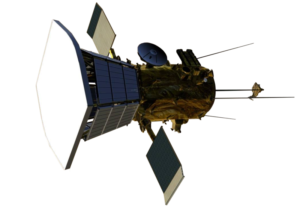
Parker Solar Probe Functioning Normally On Its ‘Sun Voyage’, Sends First Images Data: NASA
NASA’s Parker Solar Probe has sent back first data images from each of its four installed instrument suites after more than a month into its seven-year mission to touch the Sun.

The door for Wide-field Imager for Solar Probe’s (WISPR) (the only imager on the probe) – was opened on September 9, allowing the instrument to take first shots during its journey to the Sun.
The tool, WISPR, snapped a blue-toned, two-panel image of space filled with stars with the help of both of its inner and outer telescope.

The image is all about stars except the Sun. Among other things that showed up is the Jupiter.
The Parker Solar Probe, termed to be a historical approach by NASA was launched on August 12. The probe is about the size of a car and will move on steadily closer to the Sun until it reaches its expected closest approach at about 3.8 million miles.
“All instruments returned data that not only serves for calibration but also captures glimpses of what we expect them to measure near the Sun to solve the mysteries of the solar atmosphere, the corona,” said Nour Raouafi, the probe’s project scientist at the Johns Hopkins University in Laurel, Maryland.
The data sent by the probe are not subject observations but are regarding the wellness of the all four instruments in performing its job in the month of December.
The other three instruments onboard the probe too sent data back, that is, ISoIS, FIELDS, and SWEAP. All the four instruments are dedicated to unraveling the mysteries of the Sun.
ISoIS’s are two Energetic Particle Instruments comprising of EPI-Lo and EPI-Hi, and they both are responsible to cover a range of energies for these particles driven by activity.
The initial data of EPI-Lo shows background cosmic rays and particles that were energized and were introduced into the solar system from somewhere in the galaxy.
EPI-Hi data shows up the detections of both hydrogen and helium particles from its lower-energy telescopes.
The sun’s solar flare is observed by the probe’s FIELDS’ four electric field antennas on the front, while the instrument SWEAP with three of its instruments (Solar Wind Electrons Alphas and Protons), caught up shots of the solar wind.
The first close approach to the Sun by the Parker Solar Probe will be in November.
The coming next two months will see it flying towards Venus and will perform its first Venus gravity assist in early October.
The probe is expected to make at least six more Venus flybys and 24 passes by the Sun, throughout the mission.
You May Also Read: 5 Jet Airways Passengers Suffer “Mild Conductive Deafness”, Others Complain Nose Bleeding Over Cabin Crew Negligence